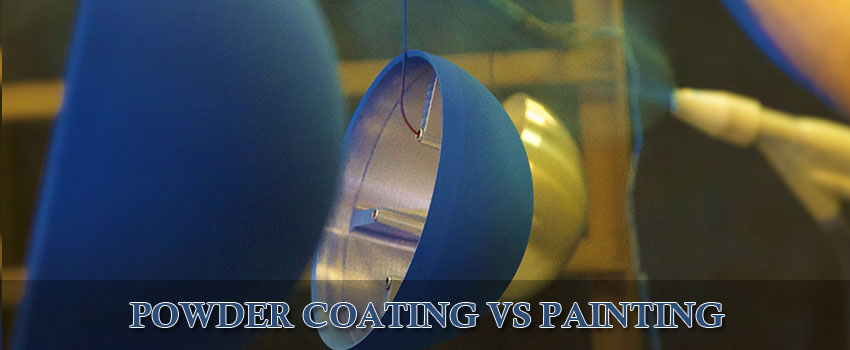MILITARY ∙ MEDICAL ∙ AEROSPACE ∙ ELECTRONICS ∙ SEMICONDUCTOR ∙ CONSTRUCTION

Liquid painting and powder coating are two common methods used to apply protective and decorative finishes to various surfaces, including metal, wood, and plastic. While both processes aim to achieve a durable and aesthetically pleasing finish, they differ in their application techniques, material properties, and performance characteristics. Here’s a comparison of liquid painting and powder coating:
- Application Technique:
- Liquid Painting: Liquid paint is applied using conventional spray guns, brushes, or rollers. The paint is typically mixed with solvents to achieve the desired viscosity and flow characteristics. Multiple coats may be applied to achieve the desired coverage and finish.
- Powder Coating: Powder coating involves the electrostatic application of dry powder particles onto the surface of the substrate. The powder is charged electrostatically, causing it to adhere to the grounded workpiece. The coated part is then heated to fuse and cure the powder, forming a durable and uniform finish.
- Material Properties:
- Liquid Painting: Liquid paints are typically composed of pigment particles dispersed in a liquid binder or solvent. The paint film forms through solvent evaporation or chemical cross-linking of the binder material. Liquid paints offer a wide range of colors, finishes, and special effects.
- Powder Coating: Powder coatings consist of finely ground particles of resin, pigment, and additives. The powder is free-flowing and does not contain solvents. Once heated, the powder particles melt and fuse together to form a continuous coating. Powder coatings are available in a variety of colors, textures, and finishes.
- Environmental Impact:
- Liquid Painting: Liquid paints may contain volatile organic compounds (VOCs) and hazardous air pollutants (HAPs), which can contribute to air pollution and health risks. Proper ventilation and emission controls are necessary to mitigate environmental impact.
- Powder Coating: Powder coatings are considered more environmentally friendly than liquid paints because they emit little to no VOCs or HAPs during application. Powder overspray can be collected and recycled, minimizing waste and reducing material consumption.
- Durability and Performance:
- Liquid Painting: Liquid paints provide good adhesion and flexibility, making them suitable for complex shapes and surfaces. However, they may be prone to chipping, scratching, and fading over time, especially in harsh environmental conditions.
- Powder Coating: Powder coatings offer excellent durability, impact resistance, and corrosion protection. The cured coating is resistant to chipping, scratching, fading, and chemical exposure, making it ideal for demanding applications and outdoor use.
- Process Efficiency:
- Liquid Painting: Liquid painting typically requires multiple process steps, including surface preparation, priming, painting, and drying/curing. The application and drying times can be relatively long, and additional equipment may be needed for ventilation and solvent recovery.
- Powder Coating: Powder coating is a one-step process that combines application, curing, and finishing in a single operation. The absence of drying or curing time allows for faster production speeds and increased process efficiency. Powder coating lines can be automated for high-volume production.
In summary, both liquid painting and powder coating offer effective solutions for protecting and enhancing the appearance of various substrates. The choice between the two methods depends on factors such as substrate material, desired finish, performance requirements, environmental considerations, and production efficiency.
STP PERFORMANCE COATING
Give us a call today at (602) 276-1231 if you are interested in any of our services.

